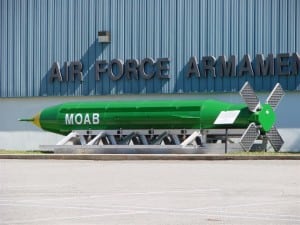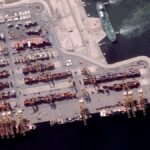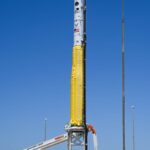
The Air Force on Wednesday night dropped the largest non-nuclear bomb ever developed on an Islamic State tunnel complex in Afghanistan.Designated the GBU-43, the 30-foot, 22,000-pound guided munition is called the massive ordnance air blast (MOAB). More colloquially it is referred to as the Mother of All Bombs. The huge explosive is deployed by sliding out the back of a C-130.A Pentagon spokesperson said the MOAB was delivered from the back of a Lockheed Martin [LMT] MC-130 special mission aircraft…

 By
By 











